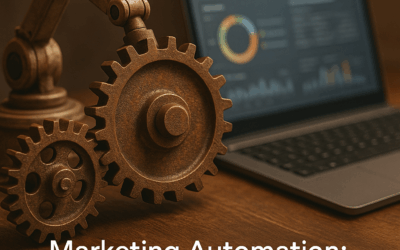Entrepreneurs and small business owners face the challenge of outpacing competitors in today’s fast-changing digital world. Facebook’s Ad Library is a vital resource that not only reveals competitor advertising strategies but also helps you refine your own campaigns. In this article, we explain why Facebook’s Ad Library is a must-have tool and provide practical steps to maximize its potential.
Discover the Benefits of Facebook’s Ad Library
Facebook’s Ad Library is a comprehensive, centralized database that displays active and past ads across the platform. This transparency allows you to see how other businesses attract and engage their audiences. By using Facebook Ad Library competitor analysis tips, you can draw inspiration, compare advertising techniques, and identify market trends. These insights will empower you to craft campaigns that not only compete but also excel in your niche.
How the Ad Library Enhances Competitor Analysis
The Ad Library features a chronological list of active campaigns searchable by keywords, advertiser names, or topics. This feature is invaluable for pinpointing the messaging, visuals, and calls-to-action that resonate with your target audience. Essentially, you gain a behind-the-scenes look at your competitors’ strategies, a crucial advantage when fine-tuning your product offers and promotions.
An important benefit of this tool is that it levels the playing field. All advertisers, regardless of size, have their campaigns displayed. This democratized access to data enables startups and small businesses to gain insights once reserved for larger companies with bigger marketing budgets.
Implementing Effective Competitor Analysis
To make the most of Facebook Ad Library for competitor analysis, start with clear objectives. Without a defined strategy, the abundance of information can be overwhelming. Follow these steps to streamline your process:
- Identify key competitors in your market segment and monitor their ad activity.
- Classify ads based on product type, offer, or target demographic.
- Analyze visuals and messaging to determine which elements drive success.
- Track trends over time to identify seasonal variations or responses to market events.
For deeper digital marketing insights, platforms like MakeBusiness offer valuable resources that complement your analysis. Combining these insights with regular monitoring of the Ad Library can help you refine your strategy and identify opportunities before they become mainstream trends.
Advanced Strategies for Maximizing Facebook Ad Library
If you’re ready to go beyond basic monitoring, consider these advanced strategies to refine your analysis and secure long-term benefits:
Segmenting Your Analysis
Rather than viewing competitor activity as a whole, segmenting your analysis can provide deeper insights. Group advertisements by industry or campaign type to understand the success factors behind their ads. Focus on aspects such as:
- Ad duration and frequency: Are competitors refreshing their ads dynamically or re-running static, time-tested content?
- Visual style: Does a minimalist design or a vibrant aesthetic capture your audience’s attention?
- Call-to-action trends: Which CTAs deliver the best conversion rates in your niche?
This segmented research can reveal innovative tactics. For example, if a competitor successfully targets a new demographic with adjusted messaging, you can draw ideas to enhance your own campaigns. Effective segmentation also aligns with Facebook Ad Library competitor analysis tips, ensuring that every data point is put to good use.
Leveraging Cross-Platform Data
An advanced tactic involves integrating Facebook Ad Library analytics with other digital marketing tools. By combining insights from social media, search engine marketing, and website analytics, you gain a broader perspective on market trends. This comprehensive approach helps identify gaps in your strategy and uncovers innovative opportunities.
For instance, if a competitor’s ad for a new product line is generating high engagement, compare this with trends on Google Trends or consumer behavior insights from sources like Forbes. Such a multifaceted strategy ensures that your business decisions are both data-driven and forward-thinking.
Integrating Best Practices into Your Workflow
Incorporating best practices for Facebook Ad Library into your routine may seem challenging initially. However, breaking down the process into actionable steps can seamlessly integrate these insights into your overall marketing strategy. Here are some tips to get started:
- Establish a regular review schedule: Conduct weekly or monthly reviews to quickly absorb and adapt new competitors’ strategies.
- Document your findings: Keep a shared document or digital dashboard to record trends, standout campaign elements, and tactics worth testing.
- A/B Testing: Experiment with different strategies influenced by competitor analysis. Testing is key to discovering what truly resonates with your audience.
- Stay Informed: Monitor changes in ad formats, platform policies, and industry news via the Facebook Business blog and other trusted sources.
Remember, the goal isn’t to replicate your competitors’ campaigns but rather to learn from them. Adapt effective strategies to fit your brand identity and business goals. Over time, this ongoing feedback loop will help you optimize your campaigns and drive better performance.
By leveraging best practices for competitive ads on Facebook Ad Library, you create a foundation for innovation. The insights not only reveal competitor tactics but also inspire you to produce engaging, creative content that sets your brand apart. Developing a proactive approach to competitor analysis transforms your strategy from reactive to forward-thinking, resulting in higher engagement and conversions.
Integrate these strategies into your overall marketing plan to gain a competitive edge and boost confidence in your decision-making. In today’s dynamic marketplace, anticipating market trends through advanced competitor analysis is essential for long-term business success.
- Facebook Ad Library provides key insights into competitor ads.
- Segment and integrate data from various platforms for deeper analysis.
- Regular reviews, documentation, and testing are essential for continuous improvement.
- Advanced strategies transform competitor analysis into a proactive market advantage.









